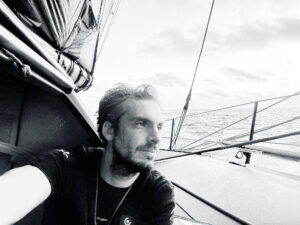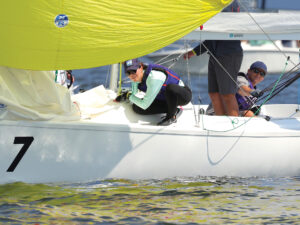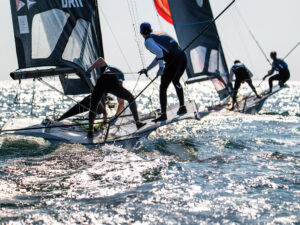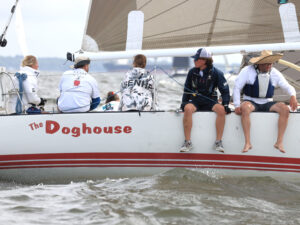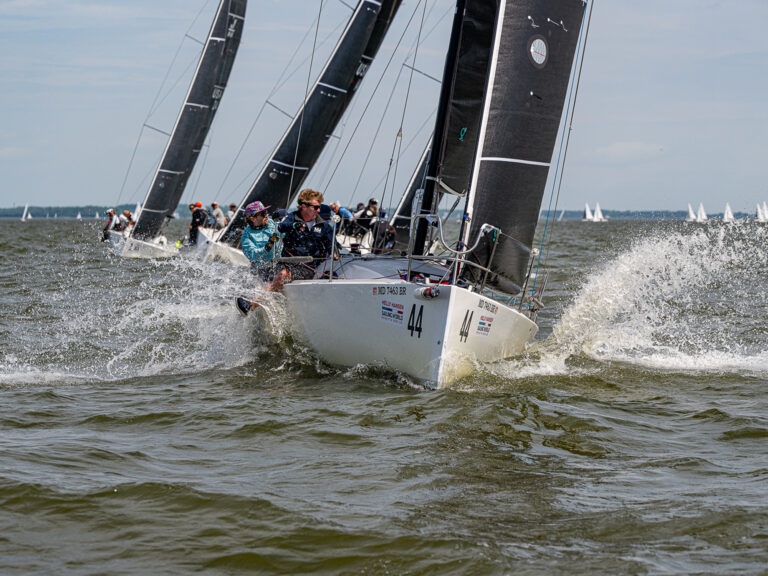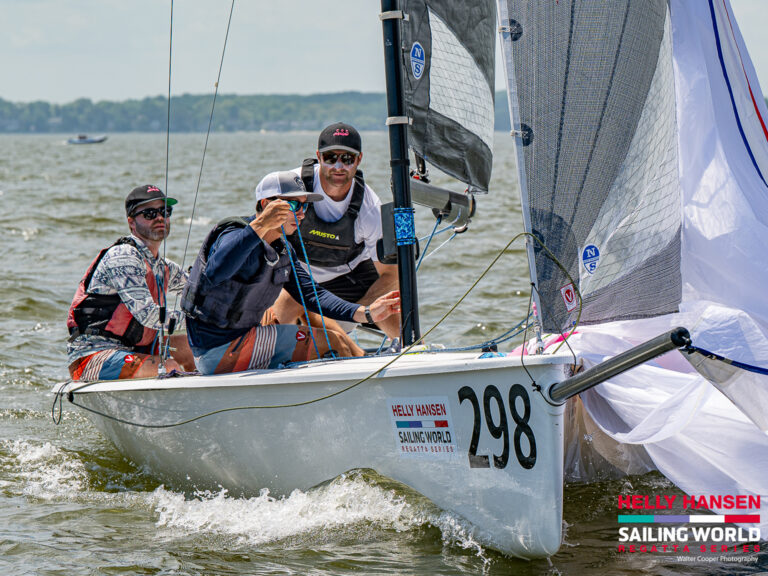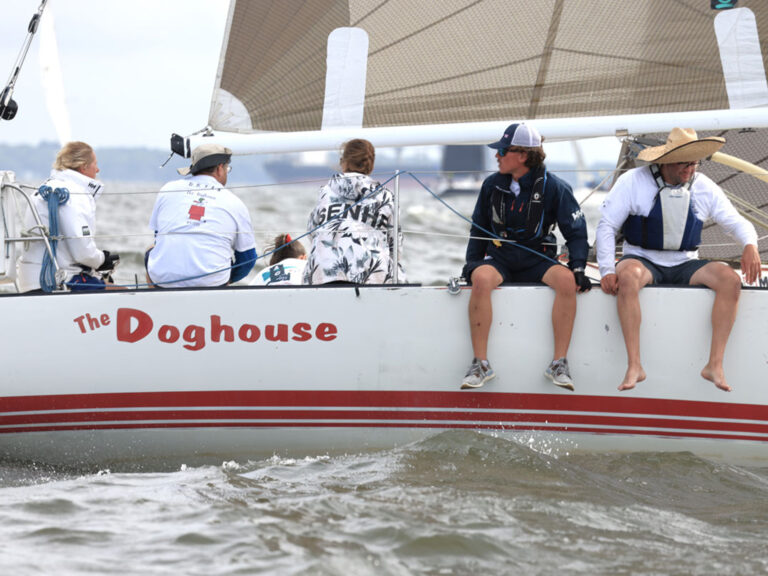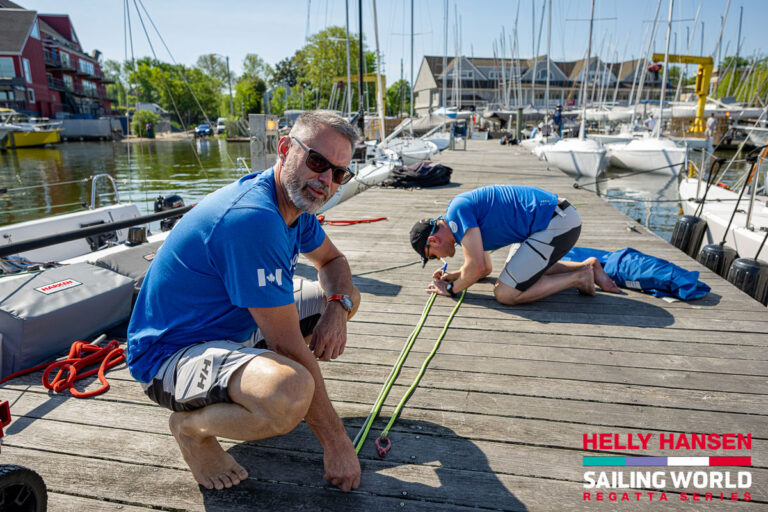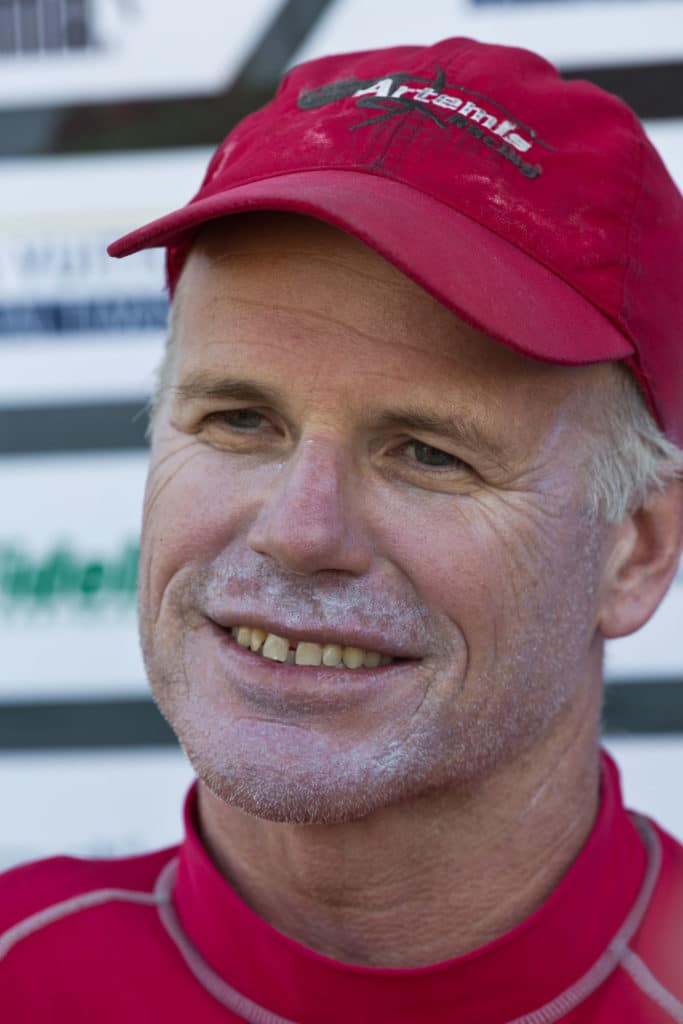
121003_hutchinson
Artemis Racing caused a fairly significant ripple in the America’s Cup world when it launched the first AC72 wing early last spring. While teams were prohibited from launching an AC72 before July 1, there was no such provision against testing the most complex part of the boat—the towering wing sail—on a different platform. So Artemis mounted its wing on a modified 60-foot trimaran and went sailing. The experiment ended in May when the wing collapsed for reasons that have yet to be publicly released. Artemis Racing has maintained that it was nonetheless a worthwhile experience, though it has impacted their training schedule. While Oracle Team USA and Emirates Team New Zealand have both launched and sailed their AC72, Artemis Racing spent much of the summer focusing on AC45 training and moving their base of operations to San Francisco. We caught skipper Terry Hutchinson late last week to get a quick update on the team as they prepare for the America’s Cup World Series in San Francisco and the upcoming launch of their AC72. [To hear from Dean Barker of Emirates Team New Zealand, click here. And for Jimmy Spithill’s thoughts on sailing an AC72 on foils, click here.]
Sailing World: How hard has it been to watch from the sidelines while Oracle and ETNZ launch and sail their AC72s? How do you fight the feeling that you’re getting left behind?
Terry Hutchinson: Yes. It’s a tricky one because I think we need to be confident in ourselves and what we’re doing, and I think we also need be respectful of what the other teams are doing and have a good observation and a good look and a good understanding of what they’re doing. The difficult part of it is a lot of these decisions were made 15 months ago, so you’re ability to do much more than understand is difficult. You can react to it; you can make decisions. But reacting and making those decisions to change something could have pretty big implications to the execution of your own game plan.
The race on land is very much like the race on the water. You can compare it to going upwind: You see some guy hipped up on you getting a little sniff of a lift, and you have to make a decision whether you’re going to take over and put yourself there or be patient and let the shift come back to you. That’s really what we’re talking about.
SW: That’s a great analogy. I imagine your gut reaction has to be one of urgency, of we’ve got to get out there.
TH: Yeah. And it would be naïve to think you’re not thinking about it.
SW: So where do you guys stand? The boat is in San Fran.
TH: I’m hoping that we’re going to be on the water in a very short period after the 45 regatta. The intention would be when this is over that we’re out sailing fairly quickly. There are a lot of things on shore that we have to execute well. It’s a hard time because everybody is pushing to get the boat out the door.
SW: What about this winter? Oracle has waffled between going to Lanai and staying home. Where will you be?
TH: Our plan is to be in San Fran.
SW: For the duration?
TH: Yup, which is good.
SW: What do you know about working these boats up that you didn’t know five months ago?
TH: I think you know certain things that are showstoppers. With the wing, there are certain things that if you see a dimple here or a crease there you know that you can keep sailing or know that you have to stop. There are certain systems on our boat that we know if we hear noises we know, “No, that’s OK.” Or actually we have to stop. Those are daggerboard systems and things like that.
In some ways the boats are quite simple, and yet they’re very complicated.
There are really a few elements of the boats: there are the bulkheads, the boards, the beams, and the wing, which is really no different than a monohull.
When you do the Version 5 boat, you load test the thing on the dock. When you do the multihull, you have the thing on the mooring, and you load test it on the mooring. Everything signs off, and you go sailing.
SW: Do you have strain alarms on these boats? Do you get used to those sounds?
TH: Ours are visual. It’s a green, yellow, and red. When you get amber, that’s when you know you have to unload the boat a little bit.
SW: How have you balanced your time between the AC72 and the AC45 over the past few months?
TH: At the end of the July we moved 100 people from Europe to San Francisco. So the month of August was set up to get ourselves moved continents. We trained for seven days prior to the first regatta, then did the regatta, since then we’ve had the 72 show up, and the guys have been working on it. But we’ve also been sailing. It’s one of those where you try to balance all of those and do the best you can with all of it. It’s not a perfect situation.
SW: Between the 45 and the 72?
TH: Yeah. You’d like to do them both better.
SW: But only one can win you the America’s Cup?
TH: Yup.
**SW: Artemis recently brought on board Nathan Outteridge. **
TH: It’s really, really good. I didn’t know Nathan before. But in a very short period of time we had two successful Olympians come into our team with Perce and Nathan. It’s a really good opportunity for all of us. Clearly, Nathan with the Korean team had shown a really good ability in the fleet race to be smart and fast. He did a lot with a little there. So we’re hoping he can bring some of that to us. Our match racing has been really good but our fleet racing has been sub-standard. Having him here, and having Perce here, we have another really good opportunity to improve our team. And it’s also one of those that it would be irresponsible for the team to not have a suitable back up to my role.
SW: Do you guys have a feel for the positions in the 72?
TH: It’s too early for us to do that because we haven’t been sailing on the boat. Everybody knows where they’re roughly going to be. But the one thing about these boats is everybody on the boat is a jack of all trades sailor. Everybody is good to be able to cover their job and the job of the guy on either side of them.
SW: You still have all of your 30 days of sailing time before Feb. 1. How do you manage using those over the next four months?
TH: As many and as often as we possibly can. We’ll go through a structural test on the boat and get through that, then we’ll start spending long days on the water just doing the best job we can developing in isolation. Which is always the trick. And hopefully we get some opportunities in there to go sailing with the defender. If we can get that, that gives both teams a good opportunity to test their gear against each other and make improvements. But that’s a long way off. Both teams need to be in a position to take some of that on. We have a couple of big fish to fry with our boat.
SW: A couple of months ago you expressed a level of anxiety about sailing this boat given the power, the wind in San Francisco, etc. Is that still there?
TH: I’m looking forward to it. Part of that comes out of just getting comfortable sailing in San Francisco Bay. We’ve had some great training over the past month and really good opportunities there. So developing comfort in the venue and the breezy conditions has been really, really good.
Just one thing [regarding any joint training] between us and Oracle. It would be disrespectful to them to imply that we’ve got anything lined up, because we don’t.

